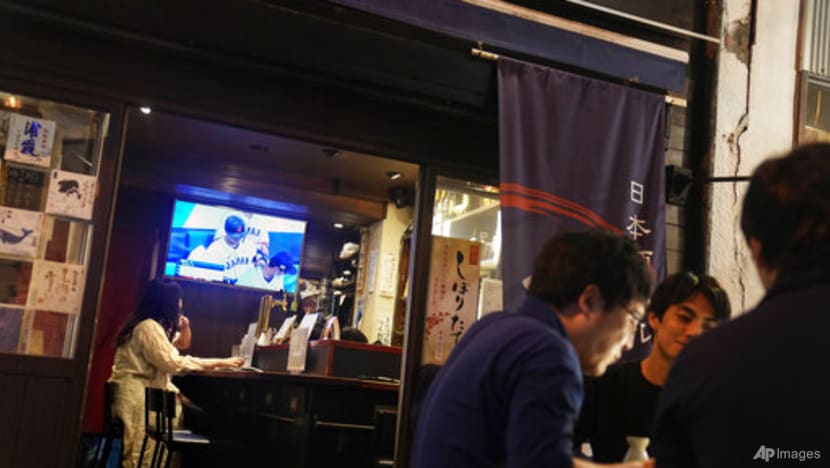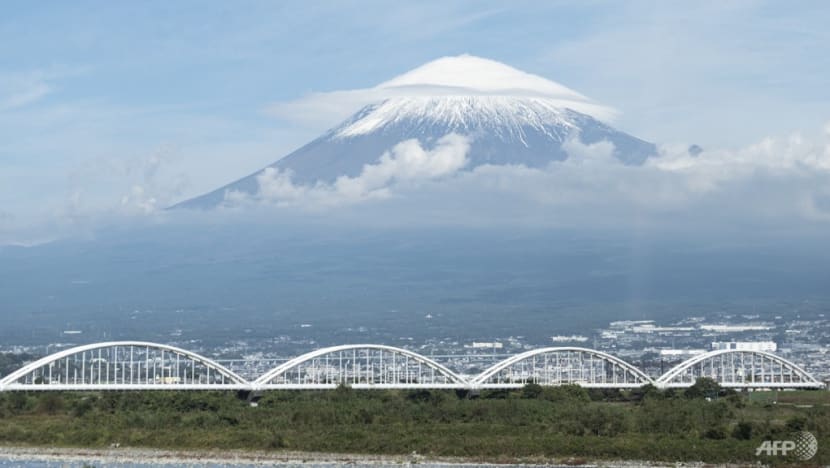Commentary: Tourists would love to visit Japan. Will Japan love them back?
When will Japan open its borders to travel? The weak yen is providing impetus to relax border controls, but proud locals bristle at the potential hordes of visitors, says Bloomberg Opinion’s Gearoid Reidy.

TOKYO: Japan looks like it may finally open its borders and end its splendid isolation. The key question is: Can it learn to love foreign tourists again?
After a series of head fake border re-openings this year which promised more than they delivered, a report on Monday (Sep 12) that Japan would scrap most restrictions on tourists was the big one.
If realised, the plans – which include restoring the visa waiver for those with three shots, dumping a daily cap on arrival numbers and allowing tourists to book without going through a travel agent – would make ease of entry into Japan look more like it did in 2019.
It’s a pragmatic, if long overdue decision from the often cautious Prime Minister Fumio Kishida. Japan has a window of opportunity that won’t come again soon to normalise its border controls.
The current wave of COVID-19 cases and the punishing summer heat are both subsiding, paving the way for an autumn where both natural and vaccine immunity should mean a respite from the disease.

WEAK YEN AN IMPETUS
More pressingly, the weak yen is also providing impetus, with the currency still trading close to a 24-year low against the greenback. With inflation relatively benign, tourists paying in dollars can expect some jaw-droppingly cheap prices in a country where dining out was already a reasonable option.
Having pledged in May to gradually make entry into Japan as easy as for other G7 countries, Kishida should be given credit for a bold and potentially unpopular decision, at a time when his approval ratings are tanking. An Asahi poll on Sunday showed those disapproving of his Cabinet outweighing those who back him, 47 per cent to 41 per cent.
Kishida explicitly mentioned making use of the weak yen in an earlier decision to relax border controls this summer. The move to restore the visa waiver, which could be announced this week, may also exert some influence on the currency; more yen buyers could provide support to stop its slide.
While Japan has been gradually letting in more outsiders, new entrants still need visas; embassies and consulates often don’t have the staff to facilitate the sudden surge in demand. The visa waiver is the key, and was the trigger for Japan’s tourism boom in the 2010s, which sparked a major new engine of economic growth.
Japan’s push for global travellers was a rare example of a wildly successful government policy, turning the country into a mass tourist destination for the first time. An initial goal of 20 million visitors in 2020 was smashed with five years to spare, and doubled instead.
Construction of hotels and theme parks boomed; politicians spoke of becoming a world leader like France, which welcomes 90 million visitors a year.
COVID-19 put those plans on hold. But it has given Japan an opportunity to use the pandemic-era reset and the weak yen to shift to a smarter strategy.
JAPAN WARY OF OVER-TOURISM
Visitors will love the weak yen, but Japan may not love them. Even before COVID-19, the congestion and littering on the ancient streets of Kyoto had become a symbol of the downsides of over-tourism.
With its dense concentration of cultural artifacts and sight-seeing spots, Kyoto has suffered from the same problem of overdemand as cities such as Barcelona or Venice, which is attempting to solve the problem with a tourist tax. A proud local population had begun to bristle at the hordes of visitors before the pandemic struck.

Airline capacity will likely stagger the number of tourists returning initially. In any case Chinese residents, who made up more than one-third of visitors before the pandemic, are still unlikely to return due to their own domestic quarantine requirements. So as it opens up to the world, Japan can start to shift expectations.
Instead of concentrating on the sheer number of annual visitors, it should make more efforts to extract value from those who make the journey. Average spending per person amounted to just 159,000 yen (US$1,113) in 2019. Over the coming years, policies should double down on ways to encourage more high-net-worth individuals who can afford lengthy (and expensive) stays.
HELPING TOURISTS GO BEYOND KYOTO, OSAKA, TOKYO
Local buy-in is crucial to avoid another Kyoto situation. Tourists should be encouraged to visit other regions, not just Kyoto, Osaka and Tokyo, and Japan should make it as easy as possible to get there.
Policymakers should also think about the type of destinations and experiences foreigners want, rather than simply offering those favoured by domestic travellers, who are often older and prefer shorter trips. Japan is still lacking in world-leading luxury resorts, while plans dating back to the era of Shinzo Abe to build casinos have been stalled for years.
Road bumps are ahead. While Japan has no laws requiring masks, there are strong societal expectations nonetheless, and mask-free foreign tourists are sure to become a talking point.
Expect objections from the medical community, especially when the next wave of cases hits as the weather gets cold. And the very possible emergence of another new variant in winter could throw things back to square one.
But for now, prospective visitors may be able to reclaim one pre-pandemic normality: Forgetting about how to process visa paperwork, and concentrating instead on when’s the best time to exchange into yen.


















